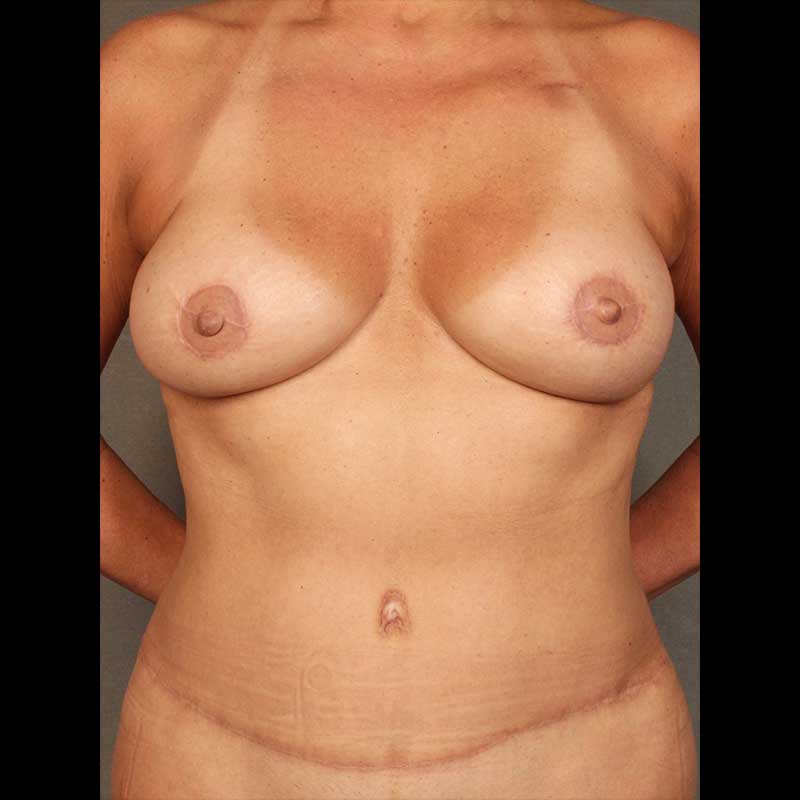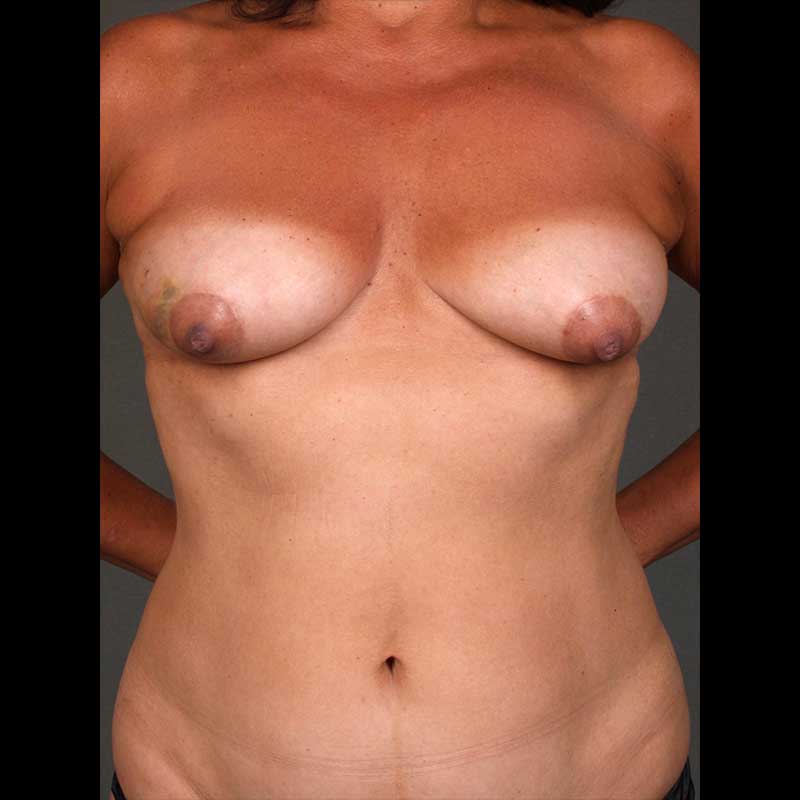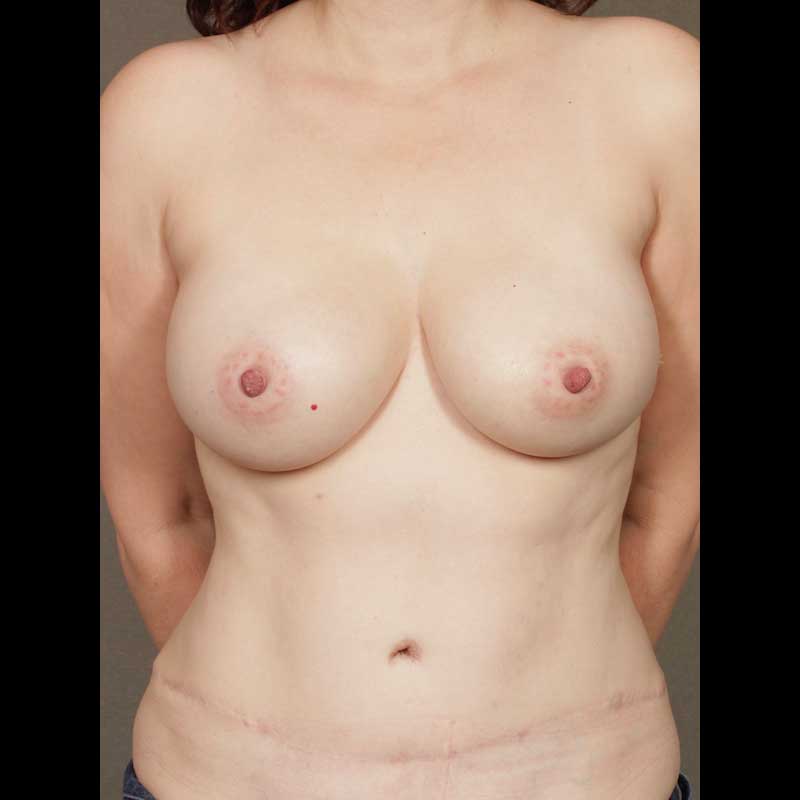Summary
These two mastectomy techniques afford similar benefits: greater normal breast skin preservation, less visible scarring, and the ability to reconstruct the breast with a potentially more natural-looking contour. However, not all patients are candidates for both techniques, and the two methods are different in approach and outcomes. Not all breast surgeons are experienced with the nipple-sparing technique, which requires careful patient selection. During your consultation, we can educate you on both techniques and, in discussion with you and your breast surgeon, advise you as to which treatment would be best suited for you.
Types of procedures
- Skin-sparing Mastectomy: With this technique, the nipple areola is removed along with breast glandular tissue while the remaining breast skin is preserved. For most patients, skin-sparing mastectomy is equally as effective at removing breast cancer as the more traditional mastectomy operation, which requires the removal of significantly more breast skin.
- Nipple-sparing Mastectomy: The nipple-sparing mastectomy approach is similar to the skin-sparing mastectomy in that breast skin is preserved. The difference is that in nipple-sparing mastectomy, the nipple areola is left intact along with the remaining breast skin, and only the breast glandular tissue is removed. Because the nipple areola is preserved, not everyone is a candidate for this technique.
Procedure details
- The type of mastectomy that is right for you depends on recommendations from your breast surgeon and plastic surgeon as well as on your desires and expectations
- Skin-sparing mastectomy is an option for most people facing mastectomy
- When deciding whether or not patients are candidates for nipple-sparing mastectomy, breast surgeons follow specific criteria that take factors such as tumor size and distance from the nipple into consideration
- Plastic surgeons also have criteria that they take into account, such as breast size, nipple areola position and the type of reconstruction planned
- In the majority of patients, once skin-sparing or nipple-sparing mastectomy is completed, immediate implant-based or natural tissue breast reconstruction can be accomplished
Risks & Benefits
Skin-sparing and nipple-sparing mastectomy techniques can be challenging for breast surgeons. In skin-sparing mastectomy the skin must be protected, and in nipple-sparing mastectomy the blood supply to the nipple must also be preserved. The primary risk with these procedures is that the breast skin and the nipple areola may be traumatized at the time of surgery and fail to heal well.
When the breast skin is preserved and heals well, a skin-sparing mastectomy procedure offers benefits that traditional surgery cannot, potentially improving the outcome and simplifying the process of breast reconstruction, while reducing the degree of scarring. The main advantage of nipple areola preservation is that the final outcome may have a more natural appearance, because it eliminates the need for nipple reconstruction.
Frequently Asked Questions
How do I know which mastectomy approach is best for me?
Nearly all patients facing mastectomy are candidates for skin-sparing mastectomy. Depending on your situation, you may be a candidate for nipple sparing mastectomy. We will coordinate with your breast surgeon to help you determine which mastectomy approach is best for you.
Is nipple-sparing mastectomy safe for individuals with BRCA genetic mutations?
Yes. The nipple-sparing approach is now routinely offered for patients that carry a BRCA genetic mutation and are having risk-reducing mastectomies.





![Case 7 Color photo of ]Breast Reconstruction DIEP Flap](https://nybra.com/wp-content/uploads/2020/03/hn-pre-1-wbg.jpg)